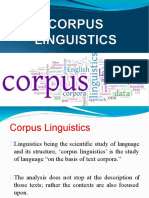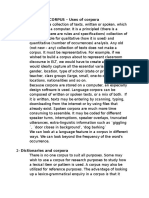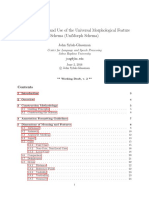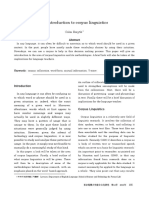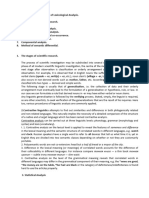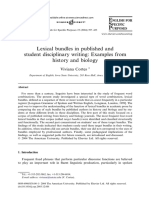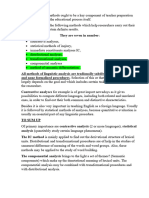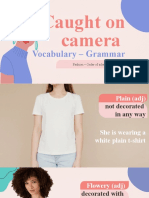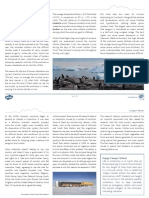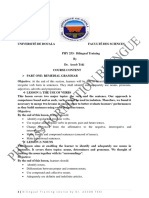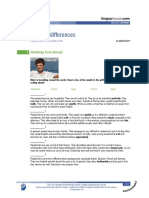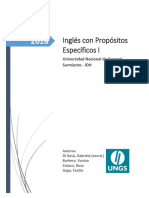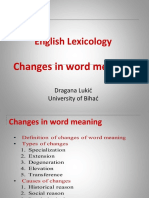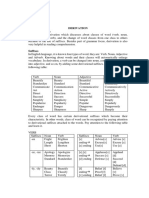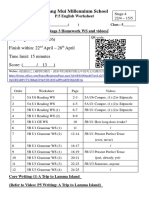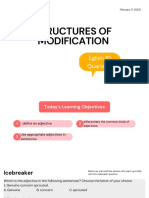0% found this document useful (0 votes)
21 views5 pagesWeek 4 Note
Chapter 4 of 'Corpora in Applied Linguistics' by Susan Hunston discusses foundational statistical methods in corpus linguistics, focusing on frequency-based analysis techniques. It covers various analytical methods such as frequency and normalization, keyword analysis, collocation measures, and lexical bundles, emphasizing their roles in exploring linguistic patterns across different texts. The chapter also addresses the applications and challenges of these methods in revealing thematic and stylistic insights while cautioning against potential biases in interpretation.
Uploaded by
Thutra DinhCopyright
© © All Rights Reserved
We take content rights seriously. If you suspect this is your content, claim it here.
Available Formats
Download as DOCX, PDF, TXT or read online on Scribd
0% found this document useful (0 votes)
21 views5 pagesWeek 4 Note
Chapter 4 of 'Corpora in Applied Linguistics' by Susan Hunston discusses foundational statistical methods in corpus linguistics, focusing on frequency-based analysis techniques. It covers various analytical methods such as frequency and normalization, keyword analysis, collocation measures, and lexical bundles, emphasizing their roles in exploring linguistic patterns across different texts. The chapter also addresses the applications and challenges of these methods in revealing thematic and stylistic insights while cautioning against potential biases in interpretation.
Uploaded by
Thutra DinhCopyright
© © All Rights Reserved
We take content rights seriously. If you suspect this is your content, claim it here.
Available Formats
Download as DOCX, PDF, TXT or read online on Scribd
/ 5


